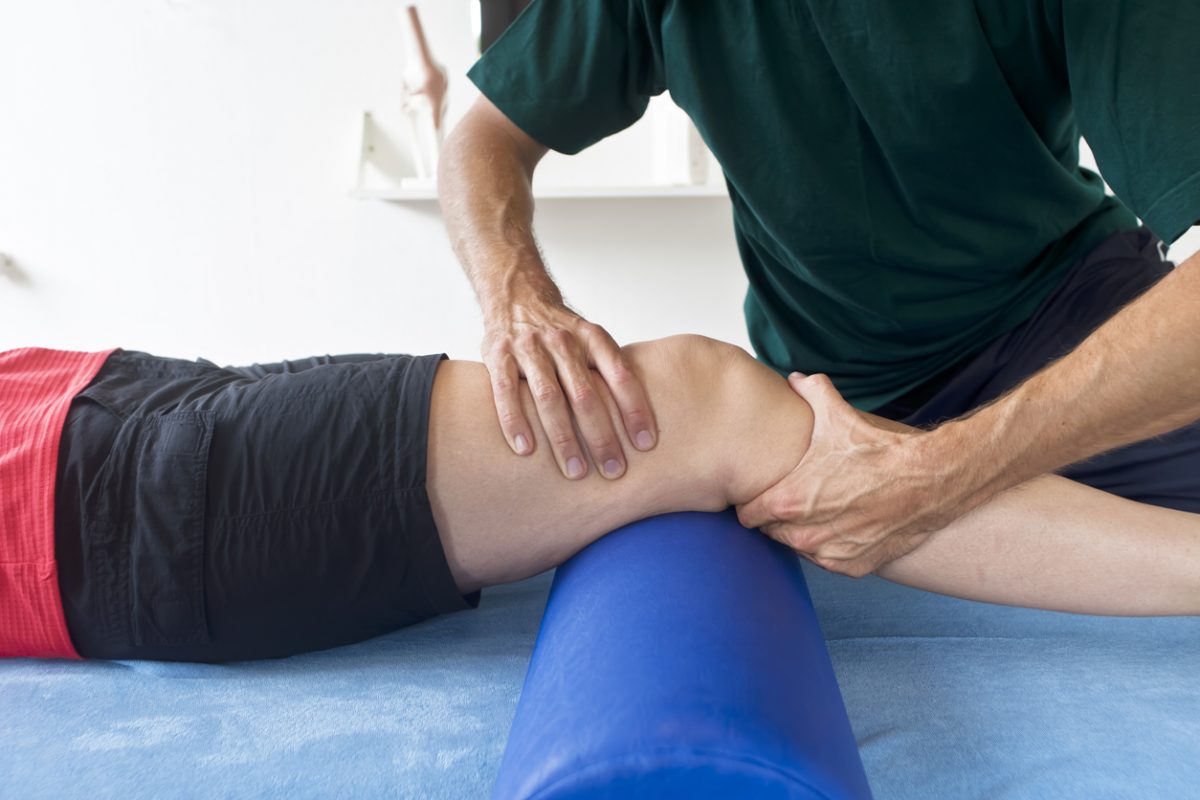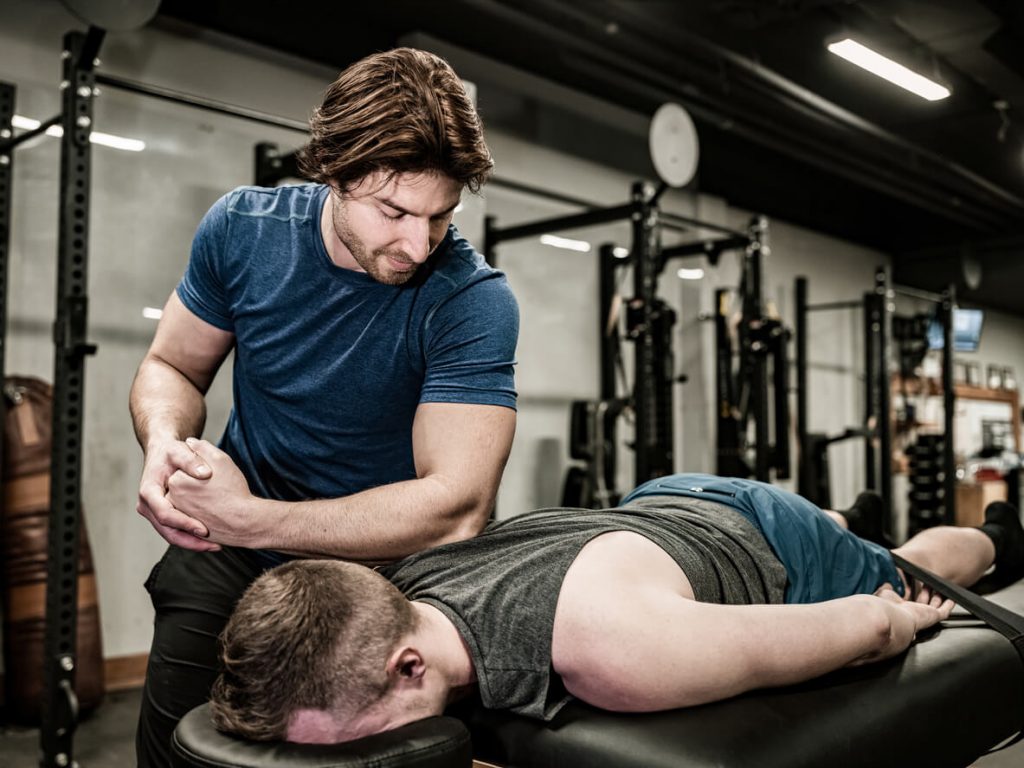How to become a sports massage therapist (step-by-step)

With sports participation at an all-time high, the demand for sports massage
therapists is increasing. So, it’s no wonder many individuals are looking into
this relatively new and exciting career path.
The only issue is, many people aren’t aware of how
to become a sports massage therapist—as it’s quite a niche area of the health
and fitness industry.
Here you’ll find everything you need to become a
sports massage therapist, from understanding the role to marketing yourself
once you’re qualified.
Table of contents:
Understand the roleUnderstand the skills you needBecome a qualified sports massage therapistChoose your career pathConsider sports massage insuranceExpand your network and market your services
1. Understand the role
This is an essential first step for anyone unaware of the roles and responsibilities of a sports massage therapist. Knowing the job inside out before committing to a course, or even a three-year degree, can save you heaps of time and energy.
So, what is expected of you once you become a sports
massage therapist?
Many factors determine this, such as:
your qualificationsyour specialismsthe setting you work inthe clients you work with
However, we can give an overview of the role by defining
sports massage therapy (SMT) as a form of physical therapy that alleviates pain
sustained through strenuous physical activity or a demanding lifestyle.
It’s a practical and hands-on role and involves
spending much of the working day administering massages to clients.
To give further insight, here’s an example of an SMT
job description taken from Indeed:

In this instance, the job role is straightforward
and aligns with everything we’ve just covered.
This will usually be the case if you’re working
in-house at a sports massage clinic or health club, but you may sometimes be
expected to possess other skills. One example is Indian head massage, which seems to be cropping up in many online job descriptions
due to its rising popularity.
If you’re planning on opening your own clinic, this
is a good thing to keep in mind—if you specialise in certain forms of massage,
you’ll stand out to potential clients.
Related: Sports massage therapist job description
2. Understand the skills you need

Following our previous point, knowing the skills you
need to become a sports massage therapist is a good idea.
This is solely for your benefit. Most people want a
career that brings out their strengths, and if you don’t enjoy working with the
public, for example, you won’t enjoy sports massage therapy.
So, aside from qualifications, here are the basic
skills you need to become a sports massage therapist:
people-oriented—you’ll need to enjoy working with and helping clients one-to-onecommunicative skills—you’ll need to explain treatments in a way clients will understandempathy—you’ll need to demonstrate patience and understanding to clientsprofessionalism—you’ll need to conduct massages in a professional and sensitive manner
These qualities are essential if you hope to become a successful sports massage therapist. You’ll need to be respectful of your clients and genuinely passionate about helping them recover from any pain or injury.
3. Become a qualified sports massage therapist
 Portrait of a confident young physiotherapist standing in her office
Portrait of a confident young physiotherapist standing in her office
There are two ways you can become qualified in
sports massage therapy: the academic or the vocational route.
If getting qualified up to degree level is important
to you, you may want to obtain a BSc in Sports Therapy before completing an SMT course post-graduation.
Completing an accredited sports therapy degree isn’t necessary for becoming a sports massage therapist.
Still, it does mean you could diversify your role further down the line and
potentially have more career options.
However, if sports massage therapy is the area you
wish to specialise in, there’s no need to undertake a three-year degree.
You can complete a Level 3 Sports Massage Therapy course and be qualified in as little as 10 weeks.
It’s always a good idea to ensure your chosen course
is accredited by a relevant awarding body, such as CIMSPA or VTCT.
Top-rated accredited course providers in the UK
include:
If you want to stand out from the crowd, you can
study up to Level 4 and Level 5, but it’s not
necessary for a successful career in this field.
Related: The pros and cons of being a personal trainer
4. Choose your career path

One of the most confusing aspects of learning how to
become a sports massage therapist is understanding the different settings
available to you.
To keep things simple, the main pathways are:
working with sports teamsworking for a physiotherapy clinicworking for a health club/gymbecoming a mobile SMTsetting up your own SMT clinic
It’s a good idea to examine whether working
full-time, part-time, or freelance is best for you. Or, whether you feel ready
to establish your own sports massage therapy business, be it mobile or based
within a clinic.
Typically, newly qualified sports massage therapists
find that picking up some experience in their first year or two before
branching out independently is a good start.
There are many pros and cons to working for yourself vs working for someone else, but experience is key if you want to hit the ground running when you set up your own business.
5. Consider sports massage insurance

Many employers require you to have sports massage therapy insurance, particularly Public Liability insurance.
This protects your legal liability if a claim is
made against you for injury to another person or property damage.
Even the most experienced sports massage therapists
can make mistakes, and the last thing you want to do is leave yourself
unprotected in this situation.
If you’re setting up your own sports massage therapy
clinic or working freelance, you may also want to cover your equipment,
especially since things like massage tables are expensive to replace.
Related: Create your sports massage business plan
6. Expand your network and market your services

This is especially important if you’re setting up
your own sports massage business, be it working as a freelancer or opening your
own clinic.
If you’re in this situation, it’s up to you to
source new clients and boost your salary.
While word-of-mouth referrals are valuable, it’s
unlikely they’ll provide you with a consistent stream of clients within a short
time. But networking and marketing are the most effective ways of filling the
gaps.
Networking involves actively connecting with other
professionals and making yourself known, potentially leading to a mutually
beneficial referral process where you promote each other’s services.
LinkedIn or any
networking or business events in your local area are great ways of doing this.
Marketing involves a more direct approach and is
about gaining potential clients’ attention and increasing their desire for your
services.
Here are some quick tips for marketing your sports
massage business:
establish your target marketbuild a social media presencecreate and distribute business cards to potential clientsapproach local businesses and ask to display leaflets on their premisesbegin a referral process to encourage clients to refer their friendscreate a website, and optimise it around keywords relevant to your local area (e.g., ‘sports massage therapist Milton Keynes’)
Always research your competitors before creating your marketing plan, and make sure you define your unique selling point. This is a foolproof way to see your client base skyrocket.
Becoming a sports massage therapist presents risks,
but you can reduce their impact by protecting yourself with specialist sports massage insurance.
At Insure4Sport, we arrange up to
£10m of Public Liability and £1m Professional Indemnity cover, which protects
you from any claims made following advice you’ve given to a client regarding
their injuries.
Click the banner below to get an instant online quote today.







